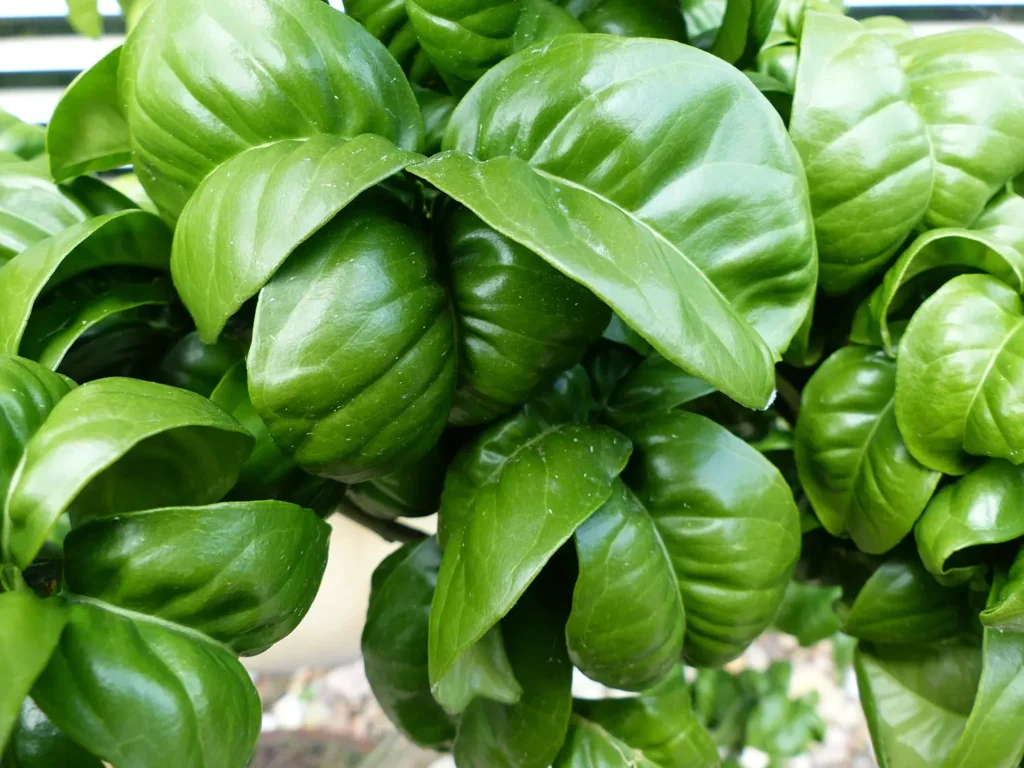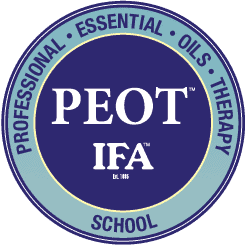Introduction
Petitgrain essential oil is derived from the bitter orange tree. The bitter orange tree produces three different essential oils (EOs);
Bitter Orange essential oil is derived from the bitter, pressed fruit peels. This bitter orange oil is often used in the food industry for its sharp, fresh taste.
The flowers are distilled to produce Neroli essential oil, considered a very high-quality oil in the skincare industry.
The dark green leaves are steam distilled to produce Petitgrain Bigarade essential oil, whereas the leaves and twigs are distilled for Petitgrain essential oil. The terms are often used interchangeably.
All three oils are used in personal care products, the perfume and food industries. In this article, we will explore the history, properties, uses, and precautions of Petitgrain EO.
Definition of Petitgrain Essential Oil
The oil is extracted from the leaves and twigs of the bitter orange tree (Citrus aurantium). It has a fresh, floral, slightly woody, dry aroma similar to Neroli and Bergamot EO’s. It’s frequently used in aromatherapy to calm and uplift people’s moods, promote relaxation, and reduce stress. It is also used in perfumes, soaps, and other personal care products because of its gorgeous aroma.
Brief History and Origin of Petitgrain Essential Oil
The name comes from the French word for “little grain”, as the oil was initially extracted from the small, unripe fruits of the tree.
Its use dates back to ancient times, with records showing that the Egyptians and Greeks used the plant for traditional health practices. In the 17th century, Italian perfumers began using it in their fragrances, and it quickly became a popular ingredient in perfumes and colognes.
Today, it is widely used in aromatherapy for its calming and uplifting properties. It is also used in skincare products for its antiseptic and astringent properties.
Extraction Process of Petitgrain Essential Oil
This herbaceous essential oil is extracted from the leaves and twigs of the bitter orange tree (Citrus aurantium) and taken to a steam distillation plant. Steam-distilled oils are very pure and natural, as no chemicals are used. The extraction process involves the following steps:
- Harvesting: The leaves and twigs of the bitter orange tree are harvested when they are mature and contain the highest concentration of EO.
- Sorting: The harvested leaves and twigs are sorted to remove impurities or foreign matter.
- Grinding: The sorted leaves and twigs are then ground into small pieces to increase the surface area for better extraction.
- Distillation: The ground leaves and twigs are placed in an often water-filled chamber, then heated or passing steam through them. The steam carries the oil molecules, which are then condensed into a liquid form.
- Separation: A separator or decanter separates The EO from the water.
- Filtration: This oil is filtered to remove any remaining impurities or solid particles.
- Storage: The final product is stored in dark glass bottles to protect it from light and air, which can degrade its quality over time.
The water that has been separated is called a hydrolat or hydrosol, and it contains many of the therapeutic benefits of the oil. In Lebanon, it is common to mist a small amount of Petitgrain hydrosol onto a cup of black coffee. Try it – it’s delicious!
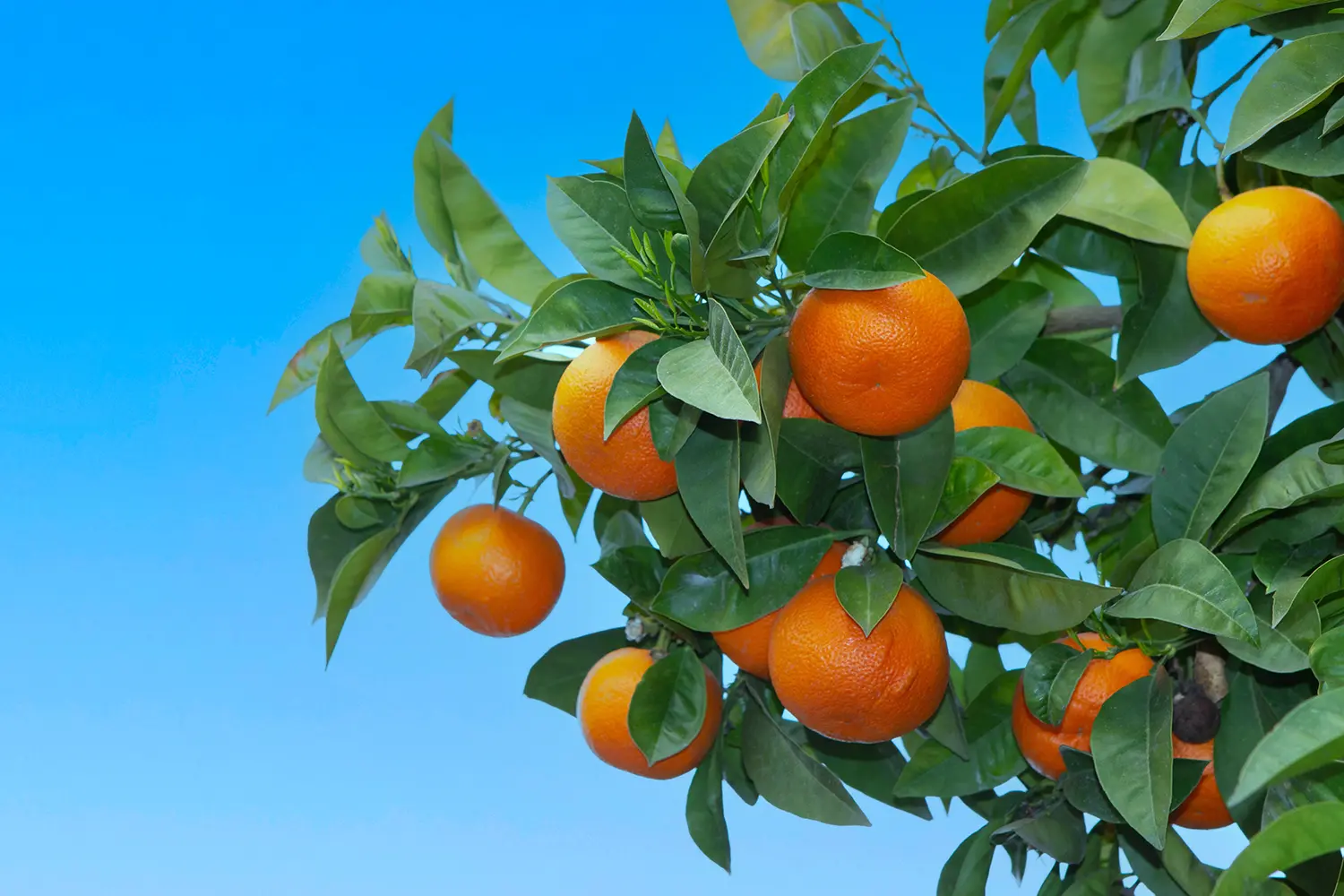
Health Benefits and Therapeutic Uses of Petitgrain Essential Oil
Benefits for Mental Health: Stress, Anxiety, and Sleep
This oil is known for its calming and relaxing properties, making it a popular choice for those seeking relief from stress, anxiety, and sleep issues. It has a soothing effect on the nervous system, helping to reduce tension and promote relaxation.
When used in aromatherapy, it helps to ease feelings of anxiety and promote a sense of calm. This can be helpful if you struggle with insomnia or other sleep disorders, as it can help to promote restful sleep.
Read more about The Power of Aromatherapy for Restful Sleep
Benefits for Skin Health: Acne, Ageing, and Inflammation
There are many excellent Petitgrain oil uses for skin health. It is particularly effective in treating acne, ageing, and inflammation. The oil is known to have antiseptic properties that may help to prevent the growth of bacteria on the skin, which can cause acne. Additionally, it helps to reduce the appearance of fine lines and wrinkles, making it an excellent choice for those concerned with ageing skin.
It is also known to be beneficial for those with eczema and psoriasis, as it helps to soothe and calm irritated skin. It is also helpful for those with oily skin, excess perspiration, congested skin, and skin blemishes, as it helps in blends to regulate sebum production and unclog pores.
It can also help to balance the skin’s natural oils, making it a good choice for those with oily or combination skin. It can be added to skin care products like toners and moisturisers or used in a facial steam to help purify and rejuvenate the skin.
Benefits for Physical Health: Digestive Health, Immune Support, and Pain Relief
This oil has digestive benefits as well. It can help to stimulate the digestive system and relieve symptoms like bloating, gas, and constipation. Make a dilution in vegetable oil and gently massage it onto your belly clockwise.
It can also be helpful in blends made for those coping with digestive disorders like irritable bowel syndrome (IBS) or inflammatory bowel disease (IBD). Its anti-inflammatory properties may help reduce gut inflammation, and this may ease symptoms like abdominal pain and diarrhoea.
In addition to its mental health, skin health, and digestive benefits, it can help reduce feelings of muscle tension and pain, promoting respiratory health and boosting the immune system. The oil can also be used as a natural insect repellent or added to cleaning products for its antimicrobial properties.
Scientific Studies Supporting the Health Benefits
- Anti-anxiety effects: A study found that inhaling Petitgrain EO reduced anxiety levels.
- Antimicrobial properties: Another study found that the oil showed antimicrobial activity against several strains of bacteria and fungi.
- Anti-inflammatory effects: The Journal of Agricultural and Food Chemistry did a study and found that the oil exhibited anti-inflammatory effects in vitro.
- Antioxidant properties: This study found that Petitgrain EO exhibited antioxidant properties, which help protect against oxidative stress and cellular damage.
- Increased performance: Tests on a group of university admin workers found that inhaling Petitgrain EO improved performance in the workplace by reducing stress levels.
What Is The Chemistry of Petitgrain Oil?
Petitgrain oil contributes several interesting terpenes, which have fantastic health benefits. These chemical compounds support healthy immune function and benefit internal systems – even when used topically.
- Linalyl Acetate: This terpene is an absolute powerhouse with various internal benefits. It is a potent antimicrobial agent and an antioxidant in the food industry.
- Linalool: These first two terpenes pair very well together, and the Linalool has an excellent antidepressant effect. The terpene is also found in several other calming oils as well.
- Geraniol: This is a powerful antioxidant, and you want that in skincare to tackle free radical damage. It’s also antimicrobial, antibacterial and anti-inflammatory, which is why it is so helpful for acne. Even more, it is antifungal and an excellent insect repellant and pesticide.
- Nerol: This is another excellent anti-inflammatory terpene. Research showed that it was beneficial in controlling ulcerative colitis, partly because it is anti-inflammatory and antibacterial.
- Terpineol: Research is ongoing for this terpene’s efficacy against antimicrobial resistance, a major medical issue for hospitals. It is also being researched for use against cancer. Another exciting aspect is that Terpineol enhances skin penetration of other substances, so it is ideal to use in age-defying skincare that you make yourself.
- Geranyl Acetate: Another terpene with an anti-inflammatory action and also helps manage pain levels.
- Myrcene: Myrcene plays a protective role against UVB-induced skin photo-ageing. It also has a good sedative effect which is beneficial for a good night’s sleep.
- Neryl Acetate: This is one of the terpenes effective against anxiety. It soothes and relaxes in a gentle, natural way.
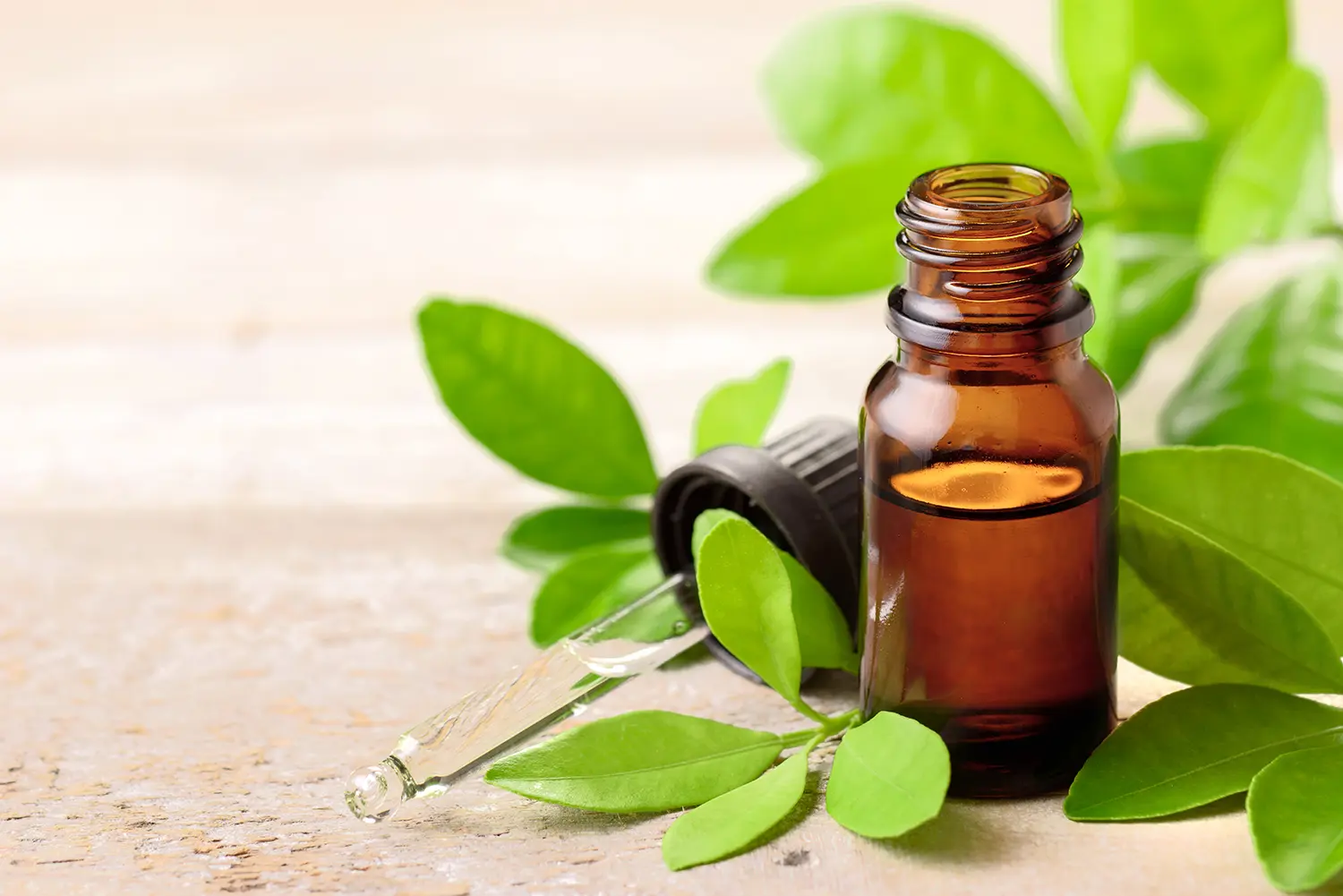
Incorporating Petitgrain Essential Oil into Your Daily Routine
Using Petitgrain Essential Oil in Aromatherapy
You can create a calming and peaceful environment by using the oil around your house:
- Diffusion: Add a drop or two to an essential oil diffuser or vapouriser to diffuse Petitgrain oil and create a calming and uplifting atmosphere in your home or office.
- Room spray: Take a plant sprayer and add 10 drops of water. Shake it briefly before you use it as a natural air freshener.
- Aromatherapy jewellery: Apply a couple of drops to aromatherapy jewellery, such as diffuser bracelets or necklaces, for on-the-go aromatherapy benefits – and you will smell sensational!
Using Petitgrain Essential Oil in Skin Care Routines
It is often called “poor man’s Neroli” because it has almost identical properties to Neroli essential oil but costs a fraction of what Neroli essential oil costs.
- Skincare: To use this essential oil topically, add a few drops to your favourite moisturiser or facial serum for its skin-soothing and antioxidant benefits. Better still, make your own age-defying face cream or serum from scratch. It’s so easy to do! Check out our Diploma in Natural Skincare Formulation course for a wide range of professional skincare products you can make at home.
- Facial steam: Add 2 drops to a bowl of hot water and lean over the bowl with a towel over your head. The steam will open your pores and cleanse your skin. It will soothe dry and irritated skin as well as balance sebum production.
- Facial mask: Now your pores are open, make your own facial mask.
- Acne treatment: Petitgrain oil offers antiseptic and antibacterial properties to treat acne. Blend a drop with a tablespoon of Jojoba oil and apply it to your face before bed. Jojoba will dissolve blocked pores and ease congested skin.
- Body oil: Mix 10 drops with 50g of carrier oil, such as Rice Bran or Jojoba oil, and use it anywhere or for a full body massage. Purodem top tip: Add 2 drops of Bisabolol, and you will have an incredible leg oil that will make your legs glow with a healthy, non-greasy sheen.
- Bath: Add 6 drops of Petitgrain oil to your half a cup of Grapeseed Oil and a half cup of your natural bubble bath for a relaxing and rejuvenating soak. Try combining it with other citrus essential oils like Lime or Mandarin to zing it up! Be sure to clean the bath afterwards, as it may be slippery…!
Using Petitgrain Essential Oil for Your Hair
- Hair oil: Camellia seed oil and Argan oil are incredible oils to condition your hair, add shine, and prevent breakage. This will promote healthy growth and relieve an itchy scalp or scalp infections. Put 50g of oil (separately or mixed) in a small plastic bottle and add 10 drops of Petitgrain. Shake well. To use, apply a few drops to your hands and scrunch through your hair. You could also put a couple of drops onto your hairbrush and sweep it through your hair. Shiny, conditioned and great fragranced hair, as simple as that.
- Hair care: Add 5 or 6 drops to your shampoo or conditioner formulation to help promote healthy hair growth and reduce dandruff. As a sebum regulator, it can balance a dry and oily scalp.
Using Petitgrain Essential Oil for Physical Well-being
Let’s get into this incredible oil’s mind and body aspects.
- Relieve muscle tension: Mix 5-6 drops of oil with a carrier oil like coconut or jojoba oil and massage onto sore muscles.
- Reduce stress and anxiety: Diffuse Petitgrain EO in a diffuser or add several drops to a warm bath to enjoy the aromatic benefits, promote relaxation and reduce stress. Remember to dilute them in an egg cup of Olive oil and salt first and rinse the bathtub afterwards.
- Boost your immune system: Mix 2-3 drops of Petitgrain EO with 20 ml of carrier oil and massage onto the chest and back to boost your immune system.
- Reduce inflammation: Mix 5-6 drops of Petitgrain EO with approximately 30 ml of carrier oil and apply topically around areas of minor inflammation or pain, such as niggling joint.
Recipes and Blends with Petitgrain Essential Oil
- Relaxing Bath Blend: Add 5 drops of Petitgrain EO, 5 drops of Lavender EO, half a cup of Grapeseed oil and a quarter cup of Epsom salts to a warm bath. Soak for at least 20 minutes relaxing your muscles and promoting restful sleep.
- Mood-Boosting Diffuser Blend: Add 3 drops of Petitgrain EO, 3 drops of Bergamot EO, and 2 drops of Lemon EO to a diffuser. This blend will help uplift your mood and promote positivity.
- DIY Room Spray: Combine 10 drops of Petitgrain EO, 10 drops of Lemon EO, and 1/4 cup of Witch-hazel hydrosol in a spray bottle. Fill the rest of the bottle with distilled water and shake well before use. Spray around your home to freshen up the air.
- Skin-Clarifying Face Mask: Mix 2 tablespoons of Bentonite clay, 1 tablespoon of apple cider vinegar, and 3 drops of Petitgrain EO in a bowl. Apply the mixture to your face and let it dry for 10-15 minutes before rinsing off with warm water. This mask will help clarify your skin and reduce blemishes.
- Calming Massage Oil: Combine 10 drops of Petitgrain EO, 5 drops of Lavender EO, and 1/4 cup of Sweet Almond oil in a small bottle. Shake well before use and massage onto your skin to promote relaxing feelings and calmness. You can include other soothing oils like Roman Chamomile and use this blend for a relaxing foot massage.
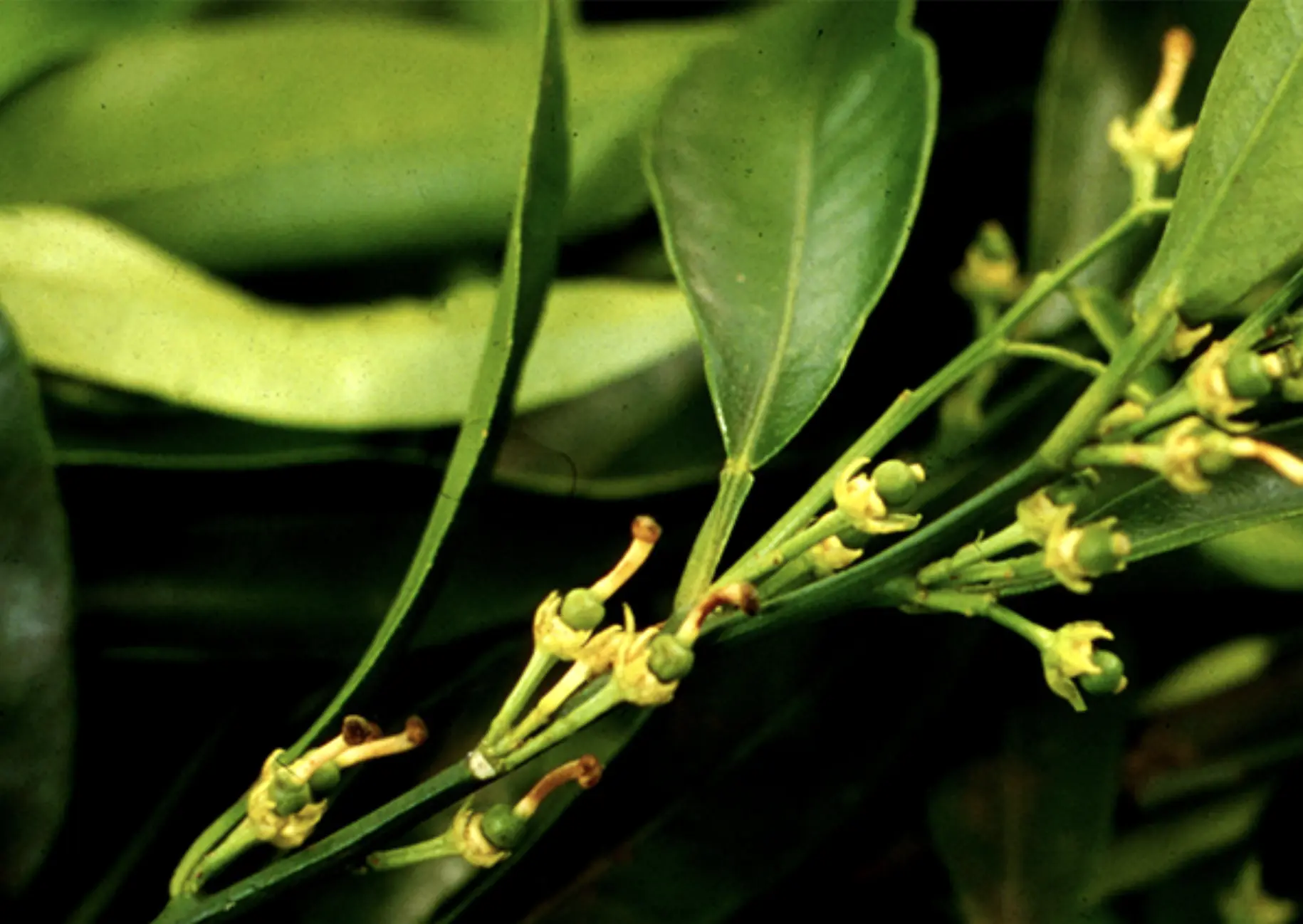
Precautions and Safety Guidelines when Using Petitgrain Essential Oil
General Safety Guidelines
- Always dilute essential oils before use: EOs are highly concentrated and can cause skin irritation or other adverse reactions if used undiluted. Dilute them with vegetable oils such as Coconut oil, Sweet Almond, or Jojoba oil.
- Test for sensitivity: When using a new essential oil, perform a patch test on a small skin area to check for allergic reactions or sensitivity.
- Keep essential oils out of reach of children and pets: EOs should be stored in a safe place where children and pets cannot get to them.
- Avoid contact with eyes and mucous membranes: EOs should not be applied directly to the eyes or mucous membranes such as the nose or mouth.
- Do not ingest essential oils: EOs should only be ingested if under the guidance of a qualified healthcare professional. They are not to be used as a dietary supplement. If you enjoy drinking herbal tea, you may find them as ingredients, but we do not recommend doing this yourself
- Use caution during pregnancy and breastfeeding: Some EOs are not safe for use during pregnancy or breastfeeding. Please consult with a healthcare professional before using any EOs during these times.
- Use caution with certain medical conditions: Some EOs may interact with certain medications or exacerbate certain medical conditions. Consult with a healthcare professional if you have any doubts.
- Follow recommended usage guidelines: Each EO has its own recommended usage guidelines, including dilution ratios and application methods. Follow these guidelines carefully to ensure safe use of the oil.
The Environmental and Sustainability Aspect of Petitgrain Essential Oil
Overview of Sustainability Issues in Essential Oil Production
Essential oils are highly concentrated plant extracts used in various applications, including aromatherapy, perfumery, and natural medicine. The production of essential oils can positively and negatively impact the environment and society. Here are some of the sustainability issues associated with essential oil production:
- Over-harvesting: Many essential oils are extracted from wild plants, which can lead to over-harvesting and depletion of natural resources. This can have negative impacts on biodiversity and ecosystem health.
- Chemical use: Some producers use pesticides and other chemicals to increase yields and control pests. These chemicals can have negative impacts on human health and the environment.
- Energy use: Essential oil production requires energy for distillation, packaging, and transportation. This energy use contributes to greenhouse gas emissions and climate change.
- Fair-trade: Many producers are small-scale farmers or indigenous communities who may not receive fair compensation for their labour or resources.
- Quality control: The quality of essential oils can vary widely depending on factors such as plant species, growing conditions, and extraction methods. Ensuring consistent quality can be a challenge for producers and consumers alike.
Having said all that, you can be a conscientious buyer. MLM companies with vast staff infrastructure often fall foul of many of these aspects. Their prices are always vastly inflated to pay for those staff and their massive advertising budgets. Consumers can support sustainable practices by choosing products from reputable producers who prioritise sustainability and fair trade.
How Petitgrain Essential Oil Stands in Terms of Sustainability
It is generally considered a sustainable option because it is derived from the leaves and twigs of the bitter orange tree. This fast-growing and hardy plant can be cultivated in various climates.
The oil is often produced as a byproduct of the citrus industry, meaning it does not require additional land or resources to be grown specifically for its oil. This makes it a more environmentally friendly option than some other essential oils that require large amounts of land and resources to produce.
It is essential to choose a reputable supplier who uses sustainable and ethical practices when producing and sourcing their products.
How to Source Ethically Produced Petitgrain Essential Oil
- Look for organic certification: Organic certification ensures that the oil is produced without using harmful pesticides and chemicals that can harm the environment and workers.
- Choose fair trade: Companies with a Fair Trade Certification declare that they are offering farmers fair compensation, as well as the workers who harvest bitter orange trees, and ensure they work in safe conditions. They are also often key partners in promoting community development projects.
- Check for sustainability: Check that your supplier supports sustainable farms that use environmentally friendly practices to minimise their impact on the ecosystem.
- Research the company: Look for companies that are transparent about their sourcing practices and are committed to ethical production (another reason to avoid MLMs).
- Consider local producers: This very much depends on where you live, but you can check to see if you have local producers and help support small businesses and reduce transportation’s environmental impact.
By following these tips, you can ensure that you are sourcing ethically produced products that are both good for you and the planet.
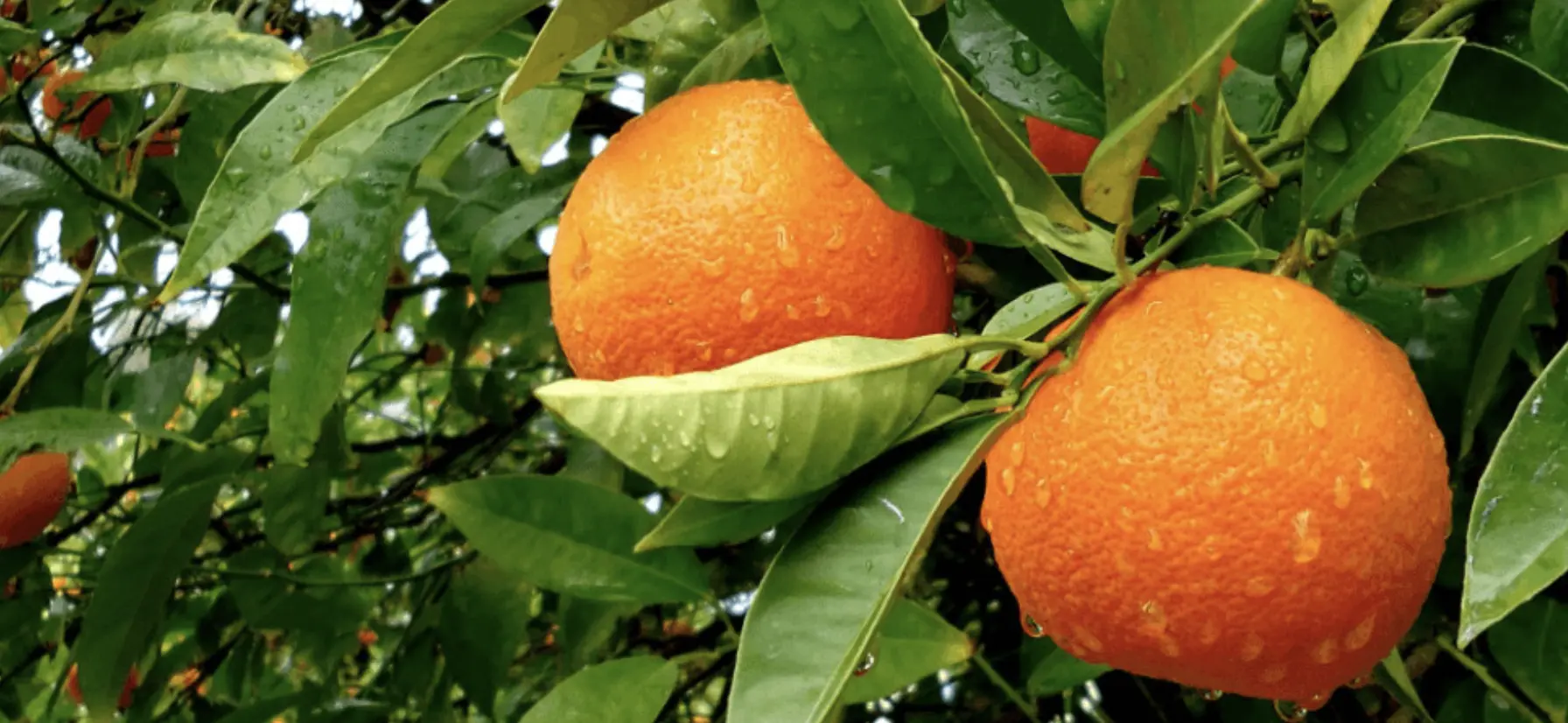
Frequently Asked Questions
What does petitgrain essential oil smell like?
It has a fresh, floral, and slightly woody aroma with a hint of citrus. It is often described as having a sweet, herbaceous scent similar to Neroli and Bergamot essential oils.
What is the difference between petitgrain oil and neroli oil?
Petitgrain oil is extracted from the leaves and twigs of the bitter orange tree, while Neroli oil is extracted from the flowers of the same tree. Petitgrain oil has a fresh, woody, and slightly floral scent, while neroli oil has a sweet, floral, and citrusy aroma. Petitgrain oil is often used in perfumes and colognes, while Neroli oil is commonly used in aromatherapy and skincare products. Additionally, Petitgrain oil is less expensive than Neroli oil due to its higher yield.
What essential oils mix well with petitgrain?
Is Petitgrain phototoxic?
No, Petitgrain EO is not phototoxic. It is safe to use properly diluted on the skin even when exposed to sunlight.
Is Petitgrain essential oil good for sleep?
Yes, it does help you to get a good night’s rest. It’s known for its calming and relaxing benefits, which promote better sleep. It has a fresh, floral, and slightly woody aroma that can help soothe the mind and body, reducing stress and anxiety that may interfere with sleep. It can be diffused in a bedroom or added to a warm bath before bedtime to promote relaxation and improve sleep quality.
What are the emotional benefits of petitgrain?
It’s known for its calming and uplifting properties, which can provide several emotional, drug-free benefits, including:
- Reducing anxiety: Petitgrain oil has a calming effect on the mind and can help reduce feelings of anxiety and stress.
- Promoting relaxation: The oil’s soothing aroma can help promote relaxation and calmness, making it an excellent choice for those who struggle with insomnia or other sleep-related issues.
- Improving mood: Petitgrain oil has a refreshing and uplifting scent that can help boost mood and energy levels.
- Enhancing focus: The oil’s ability to calm the mind can also improve focus and concentration, making it an excellent choice for those who need to stay focused on tasks.
- Easing tension: Petitgrain oil has a relaxing effect on the muscles, which can help ease stress and promote overall relaxation.
Final Thoughts
Petitgrain oil makes a valuable addition to your essential oil collection as it can be used in various ways. It is outstanding in skincare products. It has a fresh, floral, and slightly woody aroma that is both uplifting and calming. It is known for its ability to promote relaxation, reduce stress and anxiety, and improve sleep quality.
It is also beneficial for the skin, as it has antiseptic and anti-inflammatory properties that can help to soothe and heal various skin conditions. It can also be used as a natural deodorant, as it helps to neutralise odours and prevent bacterial growth.
Overall, it’s a great addition to any aromatherapy or natural health routine. It is safe for most people to use, but as with any essential oil, it should be used with caution and in moderation. Always dilute it properly before use, and consult an aromatherapist if you have any concerns or questions.


